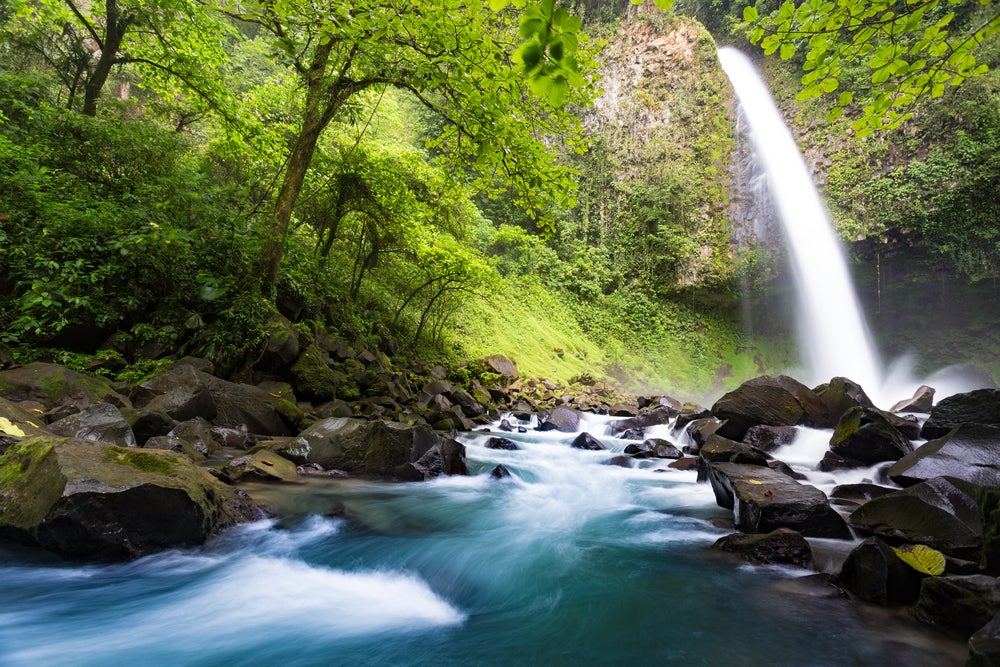Water is the most important resource in the world, providing uses for drinking, irrigation, hygiene and cooking. The issue of waters sustainability is growing every day. Not only is water the most important resource, but clean water is a necessity of life. In a developed nation, such as the United States, clean water might be the most available product, but in third world countries and developing nations, clean water that is both available and safe to drink is an extreme problem. 
According to National Geographic, about 880 million people don’t possess access to clean water. Dysentery and cholera spread from consumption of contaminated water, causing roughly 5,000 children to die each day, while trachoma alone has blinded six million people. Families living in poverty are affected the most by a lack of access to clean water. Many of these people become and stay sick and are forced to travel miles in order to obtain water, which prevents them from making money and going to school.
This struggle for water has greatly increased demand and depleted the worlds source of groundwater. Agriculture takes up about 70% of the worlds supply of freshwater, and industries use about 22%. Sandra Postel, head of the Global Water Policy Project, says that, “we’re going deeper into debt on our groundwater use, and that has very significant impacts for global water security. The rate of groundwater depletion has doubled since 1960.” Postel’s statement sums up the water issue perfectly.

The major cities of the world are another proponent of the universal depleting water source issue. According to a 2014 study by the Nature Conservancy, cities use 504 billion liters of water daily, causing a major overuse of watersheds. Bogota, Columbia is home to about 7 million people whose lives rely on the neighboring mountain wetlands for water. The GEF has stepped in to preserve these wetlands by implementing the Special Climate Change Fund in order to reduce global warming effects, and sustain Bogota’s water source.
A great amount of the earth’s water supply comes from rivers and floodplains. These ecosystems provide mankind with our main source of water, which humans will permanently have demand for. Postel says, “when we take from rivers, floodplains, and watersheds, those ecosystems bear the brunt of water scarcity and begin to be degraded or disappear. And that also creates a cost to us not just to nature, because we also depend upon those ecosystems.” Her statement paves the way for future water sustainability solutions.

When considering possible solutions, the most helpful scenario would be to be more productive when using water. The first step is to develop a system of effective water use. Regulations must be placed on the agriculture industry, which uses almost three-quarters of earth’s water supply. Postel recommends “drip irrigation,” and “growing crops that are more suitable to the local climate.” She also says that farmers lack proper incentives to productively use water. When provided with the proper incentives, farmers will act on them.
According to National Geographic, the United National General Assembly finds that clean and safe drinking water, along with sanitation is a basic human right and “essential for the full employment of life and all human rights.” The Environmental Protection Agency has implemented three projects: the Water Infrastructure Challenge, Building Sustainable Infrastructure, and Managing Sustainable Utilities. The Water Infrastructure Challenge project focuses on policy on water infrastructure sustainability and infrastructure needs. The Building Sustainable Infrastructure project concentrates on water and energy efficiency, alternative technologies, and asset management. Lastly, the Maintaining Sustainable Utilities project centralizes on effective utility management, finance, and pricing and affordability. Each of these three projects are good examples of what it takes to save the earth’s clean water source.
I found these articles so captivating because I believe that water that is both safe and clean is a necessary human right, and one that should be available to everyone. Before reading this National Geographic publication I was not aware that 5,000 children die each day from consuming contaminated water, which is all the more reason we need to come up with solutions to both use earth’s water supply more efficiently, and to provide everyone their right to have clean and safe drinking water. Every human being on earth deserves clean water to drink.
https://www.epa.gov/sustainable-water-infrastructure
https://www.nationalgeographic.com/environment/sustainable-earth/water/
https://www.thegef.org/news/importance-water-sustainability